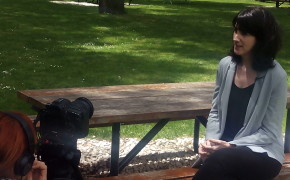Updating craftsmanship access to new markets and public through collaboration with the university students and graduates.
The National Reference Centre for Craftsmanship (CRN Albayzín) together with the University of Granada and in particular the research groups in Fine Arts, Circular Economy and AI researchers created the Laboratory of Innovation in Crafts, Design and Contemporary Art and developed the project "ADA = artesanía + diseño + arte" (crafts + design + art).
The projects base was to create a space to stimulate interaction between traditional craftsmen, artists and designers who have graduated from the Faculty of Fine Arts and the Art Schools of Granada with the aim of contributing with innovative ideas and designs for traditional crafts.
Shop holders were invited to a session with the artisans, artists and designers so that they could express their needs in terms of design and production of objects within a particular creative line, (e.g. calligraphy scripts in the Alhambra, the Granada meadow and Lorca characters, etc.). Then, workshops, meetings and conferences around every topic and crafts were organized and the teams started working on the topic they had chosen as leitmotiv.
At the end of the workshops, a prototype presentation session was held. All the businesses connected to the heritage sites in the city were invited to establish contact with the craftspeople. After the presentations, commercial contacts allowed some of these prototypes to produced and sold in shops such as the Alhambra, the Museum of Sciences or the Federico Garcia Lorca center shops.
Resources needed
Human and economic resources of the CRN Albayzín and the University of Granada (through the Research Group and Research project). Since this was a beta version of the project, the budget allocated was not high.
Evidence of success
The positive feedback from the participants as well as the impressions given by the shops involved. The best evidence are the projects that became real and are selling well in some stores in the city. On the other hand, rough evaluations of the processes were made to help the owners of this practice understand their weaknesses and improve objectives and results. This activity serves also to fulfil their objectives as a research group in contemporary crafts in the short, medium, and long term.
Difficulties encountered
Difficulty to reach some craftsmen and designers.
Challenging relationship between designers/artists with artisans, most of them traditional and medium aged.
Difficulty in establishing workshop collaboration models during the pandemic due to the quarantine periods.
Potential for learning or transfer
The main synergy is produced by the collaboration between the University and the National Reference Centre for Crafts. The greatest benefit is produced by the fact that the University teaches and researches many of the disciplines that can contribute their knowledge in a transversal way to the crafts, such as: art and design, copyright and marketing rights, e-commerce, market, communication, anthropology, law, artificial intelligence, engineering, etc.
The synergy established between young designers/artists and the traditional artisans finding ways of collaboration to achieve a high level of production following the creative indications, areas and scope appointed by the stores.
The synergy set with the businessmen in the city through the implementation of a communication channel of businesses, shops, and stores with the producers, was of great benefit even in a testing edition, and we foresee high potential in this type of collaboration that can be implemented in other places.
Please login to see the expert opinion of this good practice.
Tags: Art, Business enterprise sector, City, Creative industry, Cultural heritage, Culture, Design, Digitalisation, Enterprise, Good practice, Heritage, Innovation, Tourism industry, Trade








